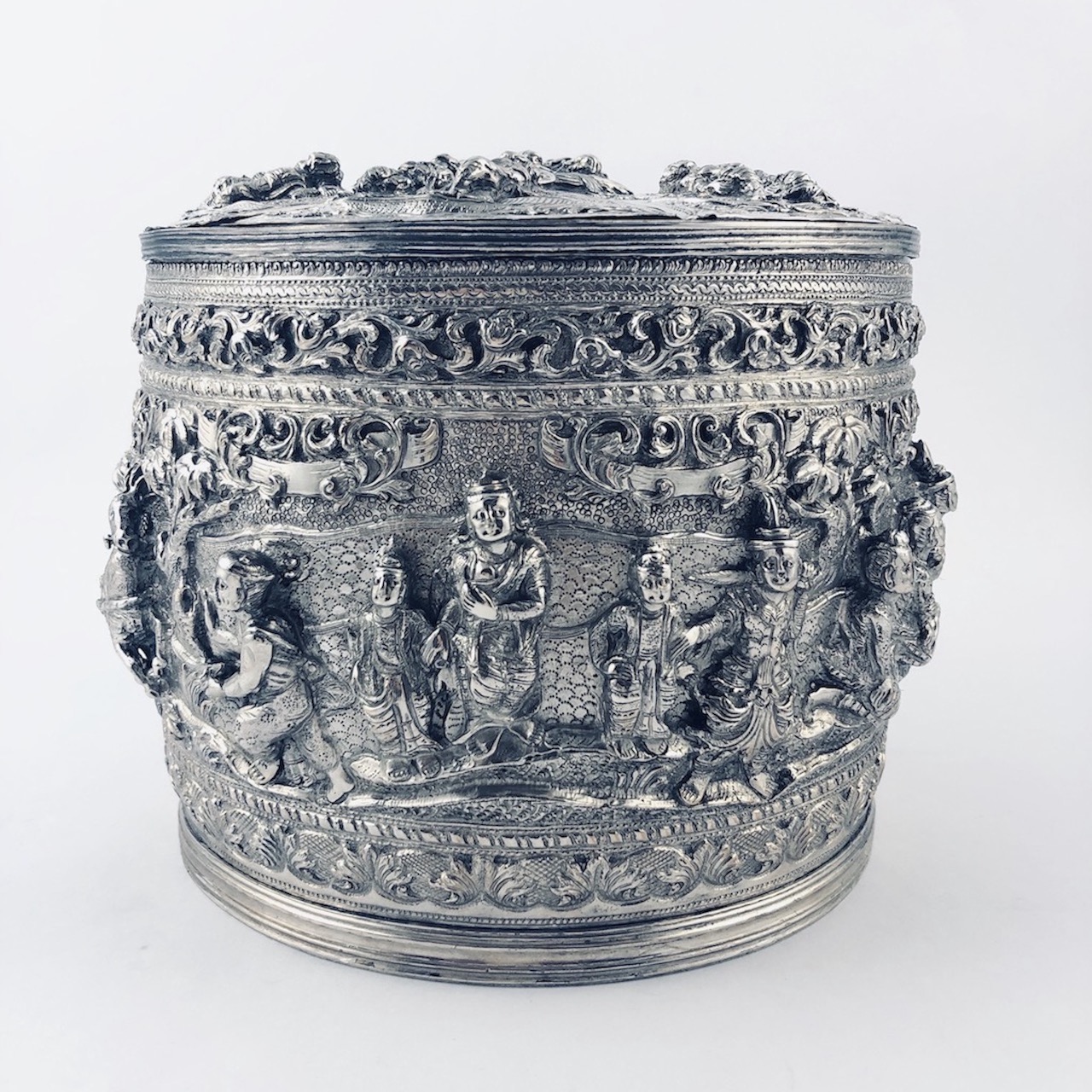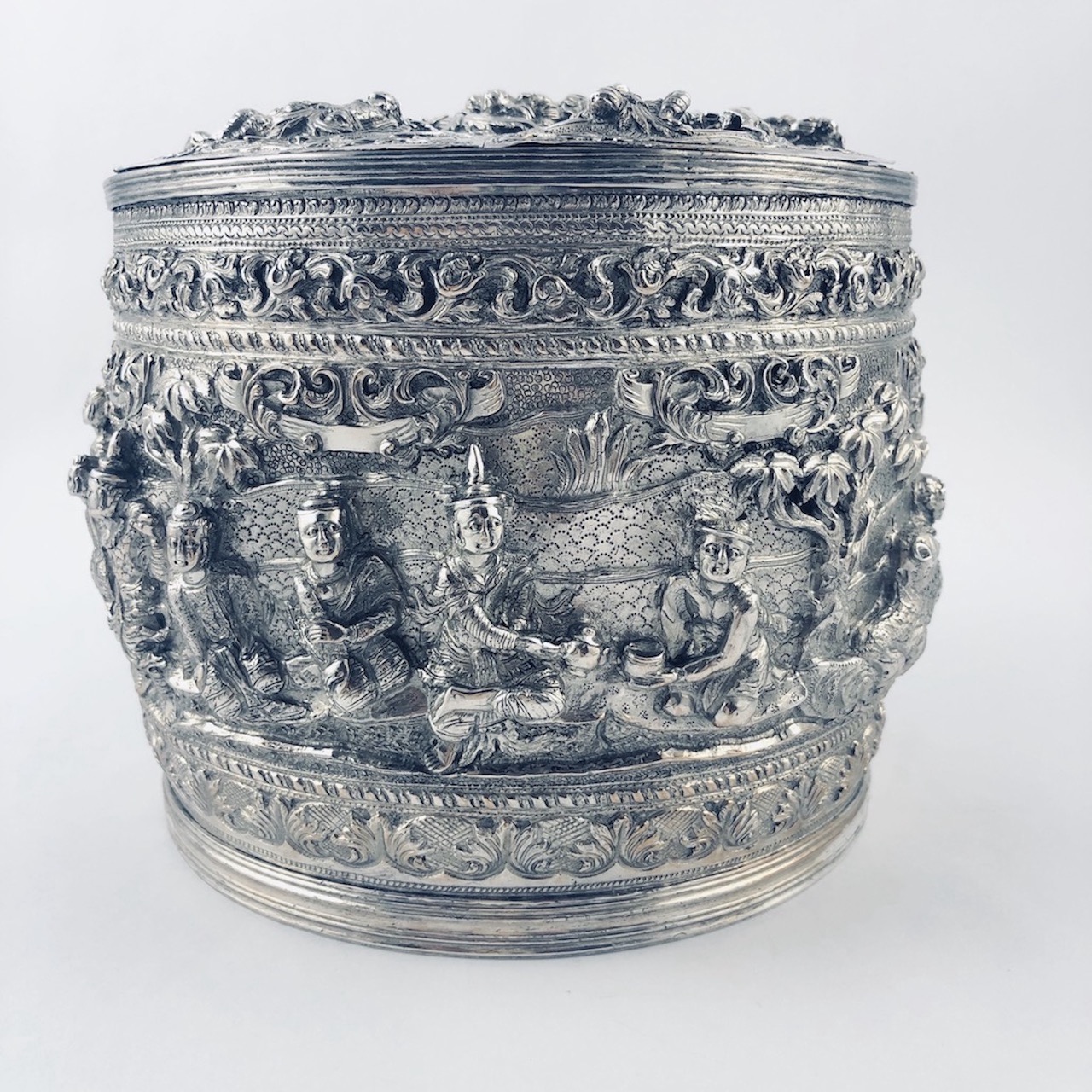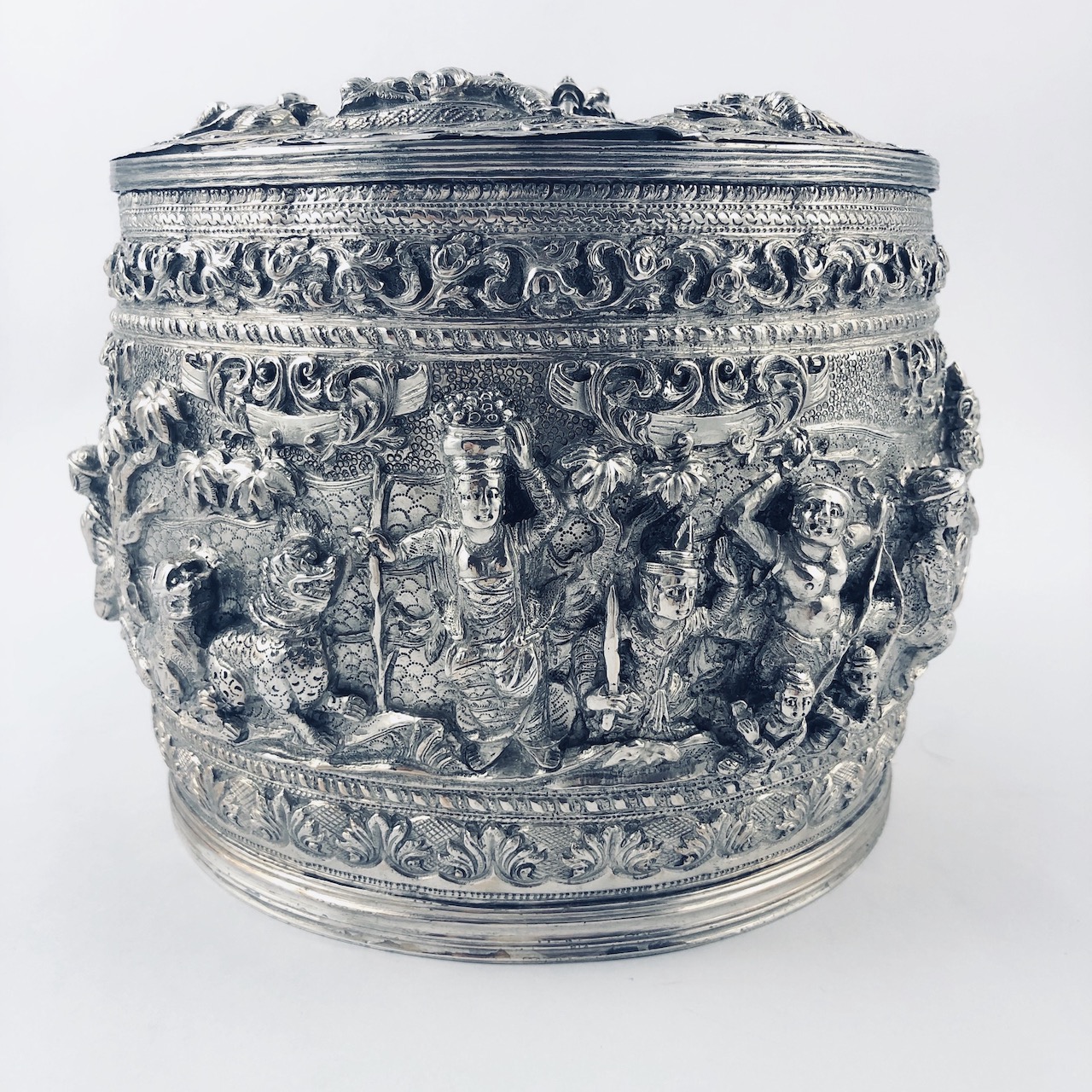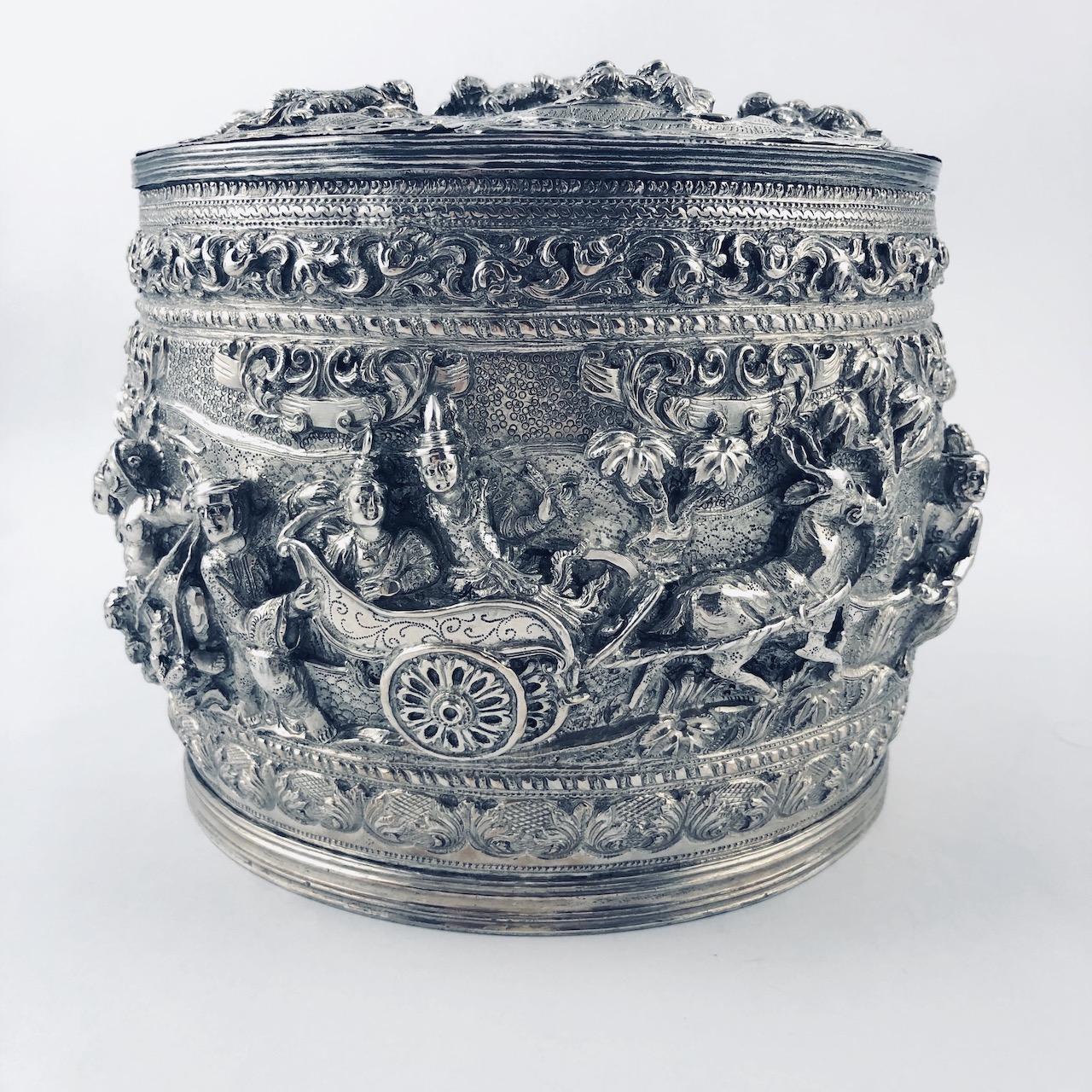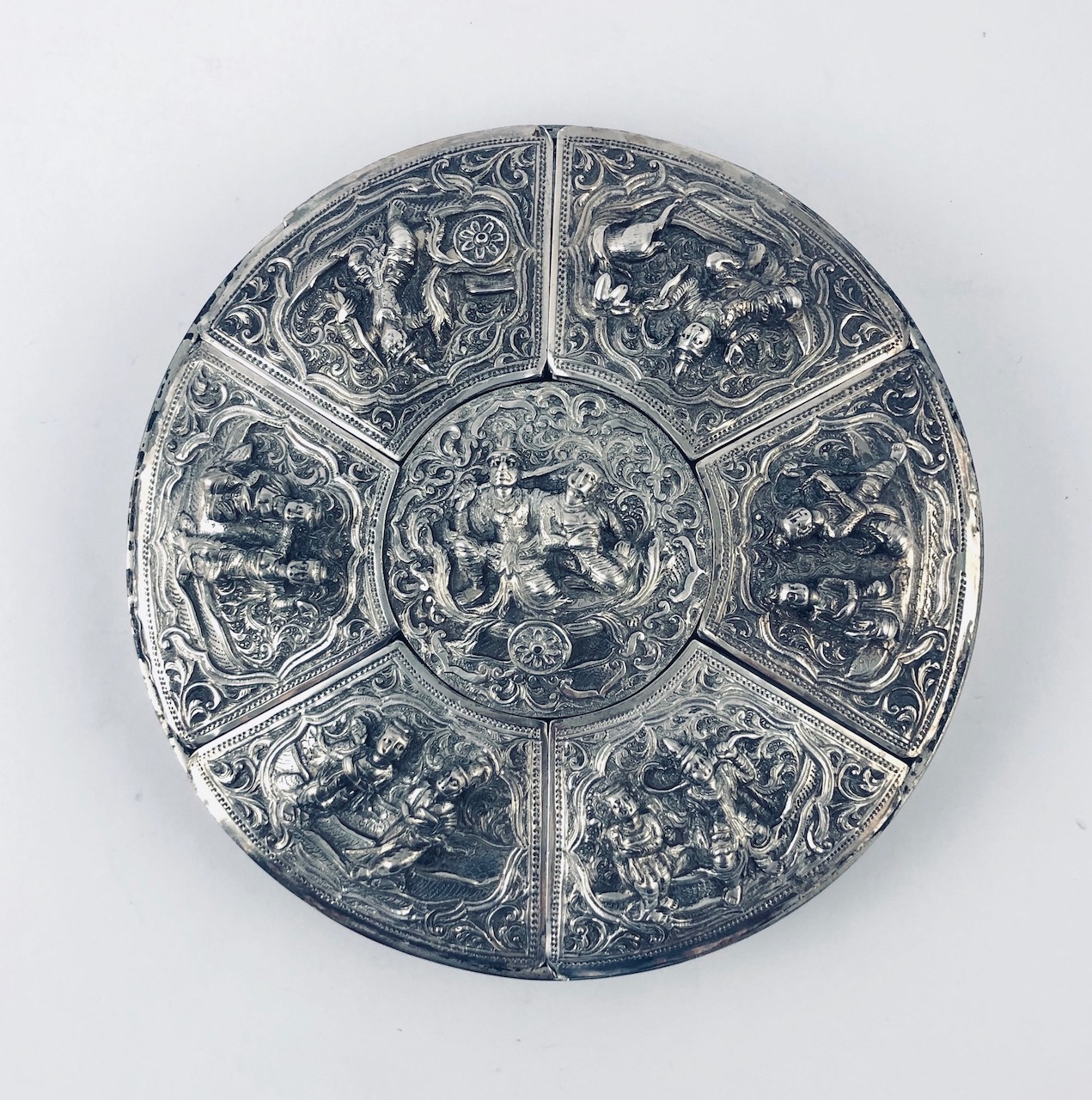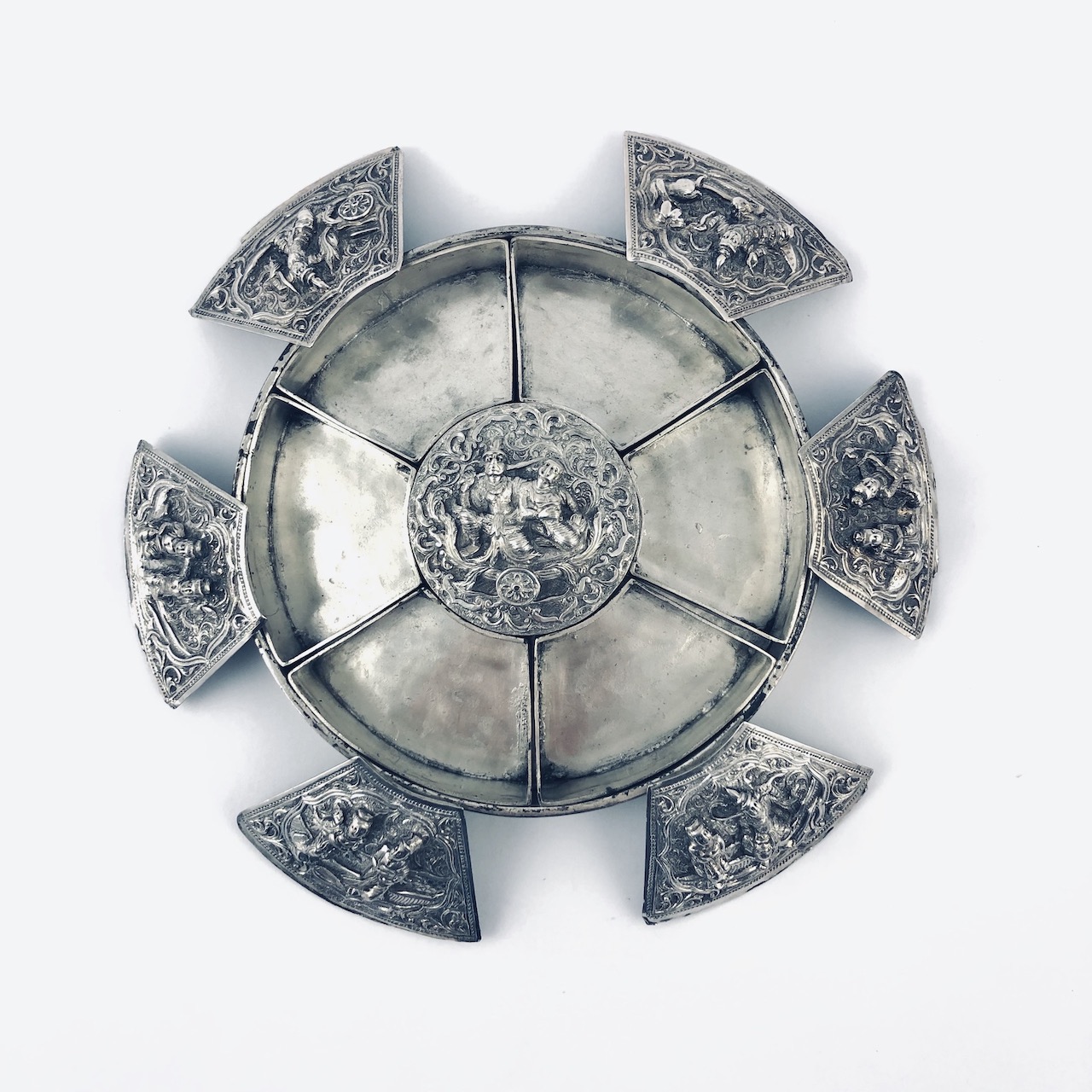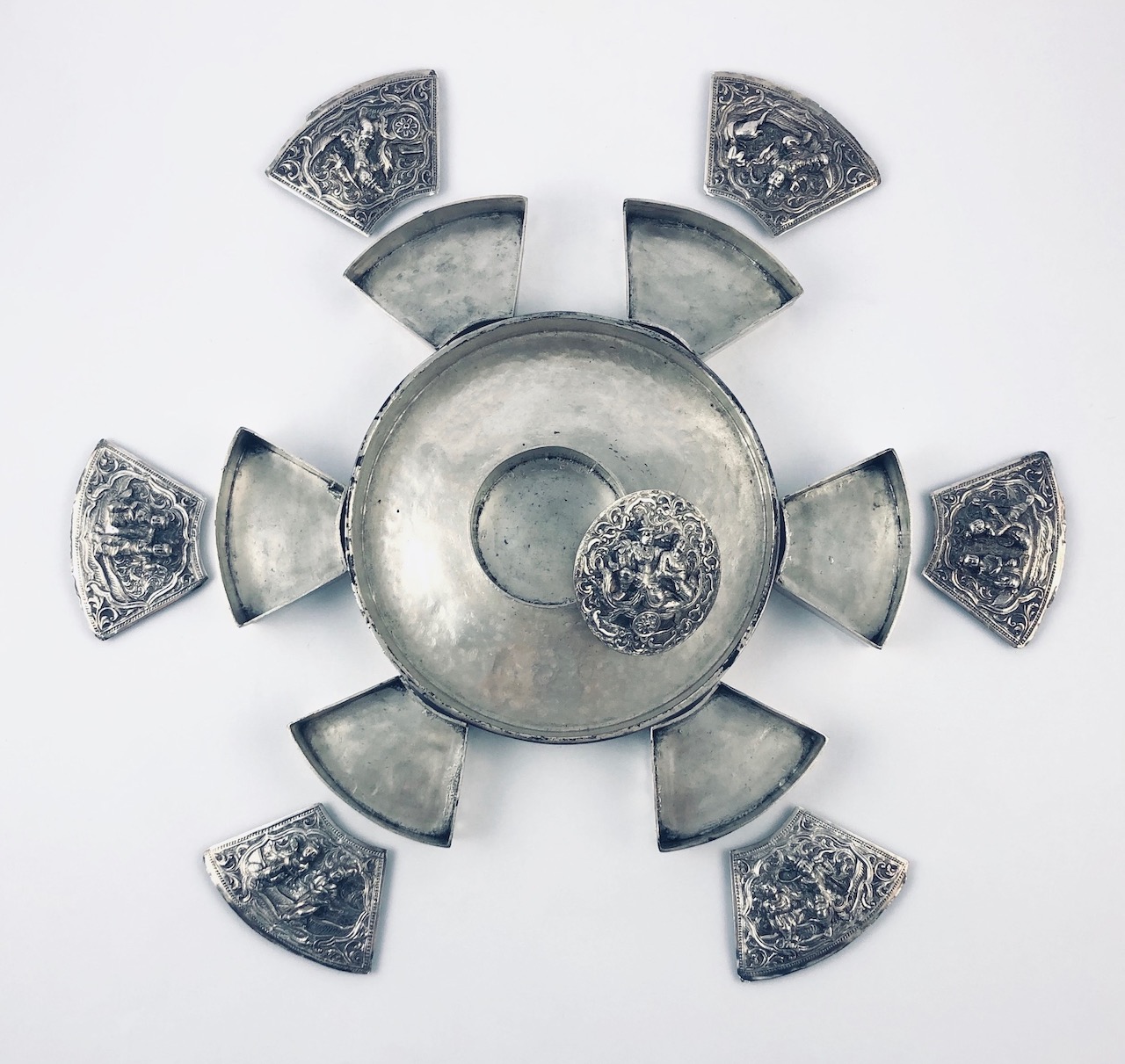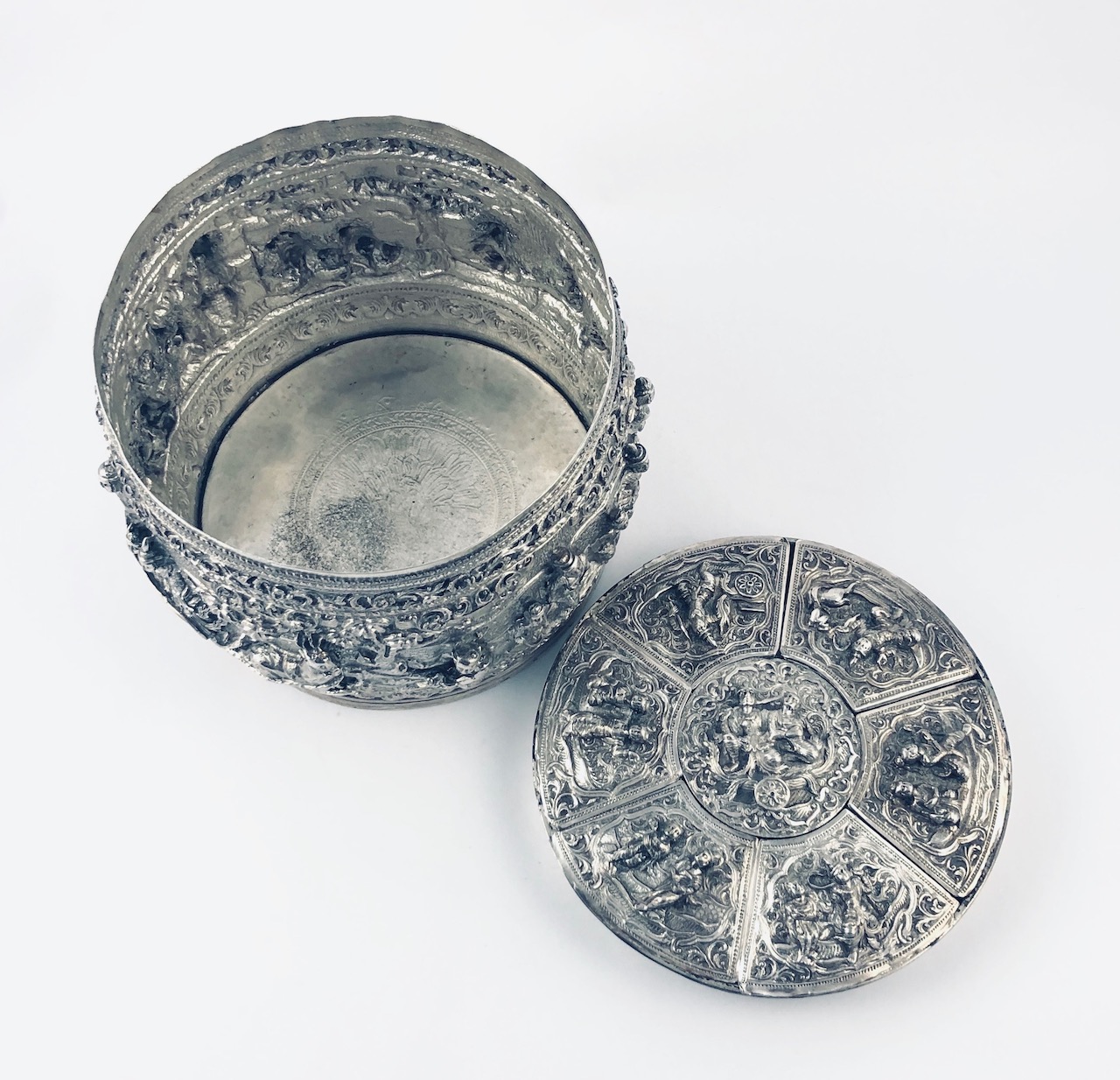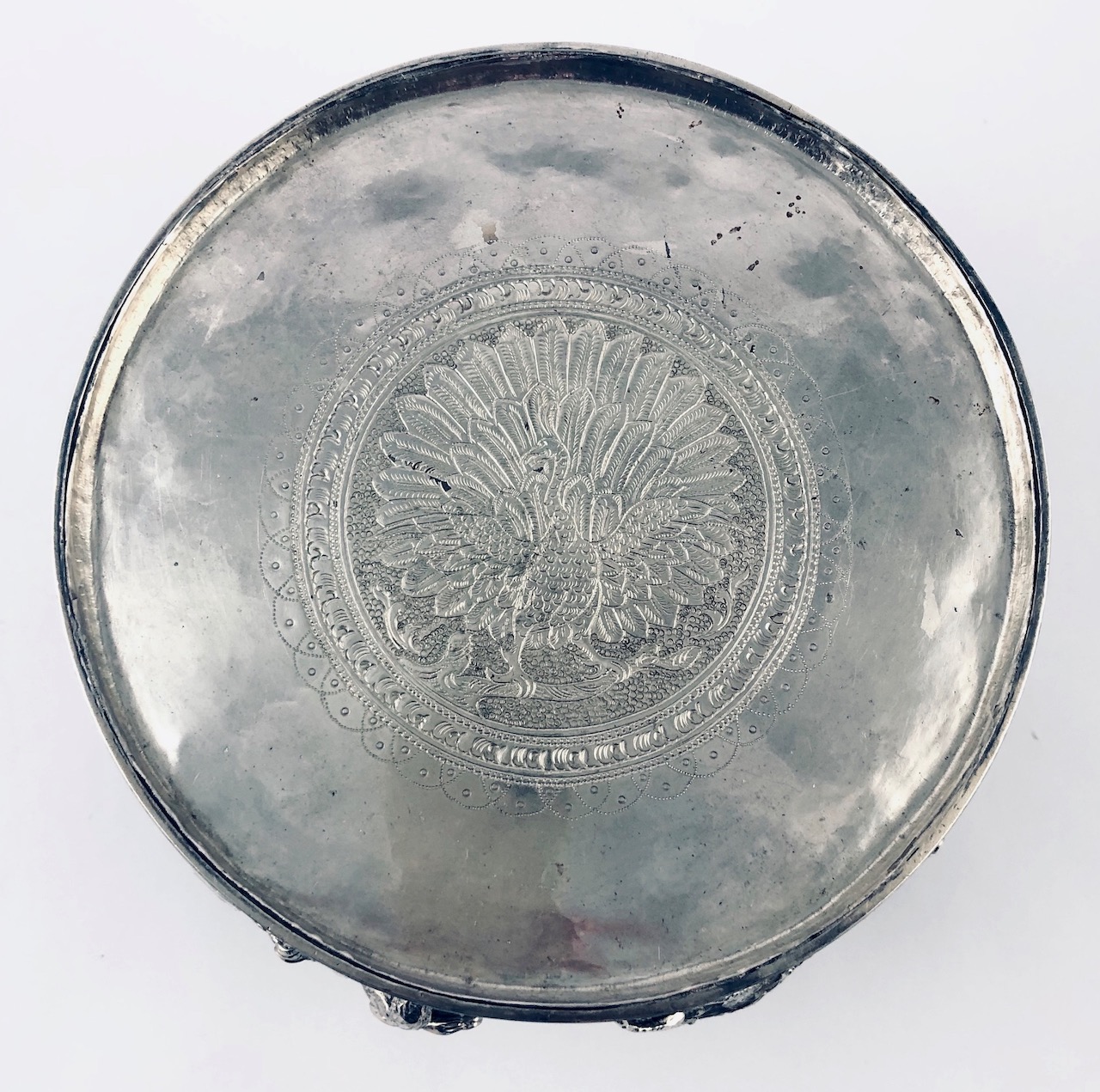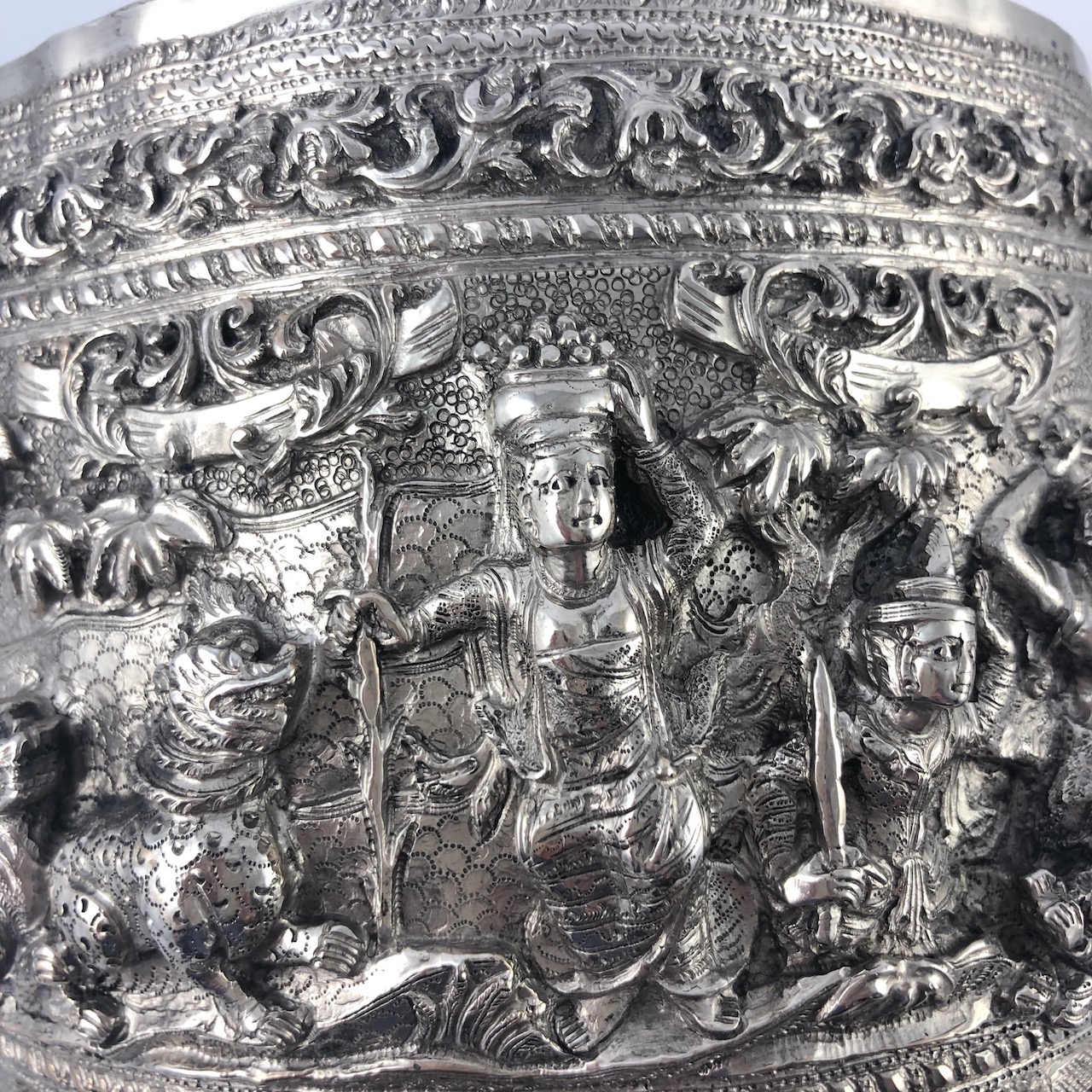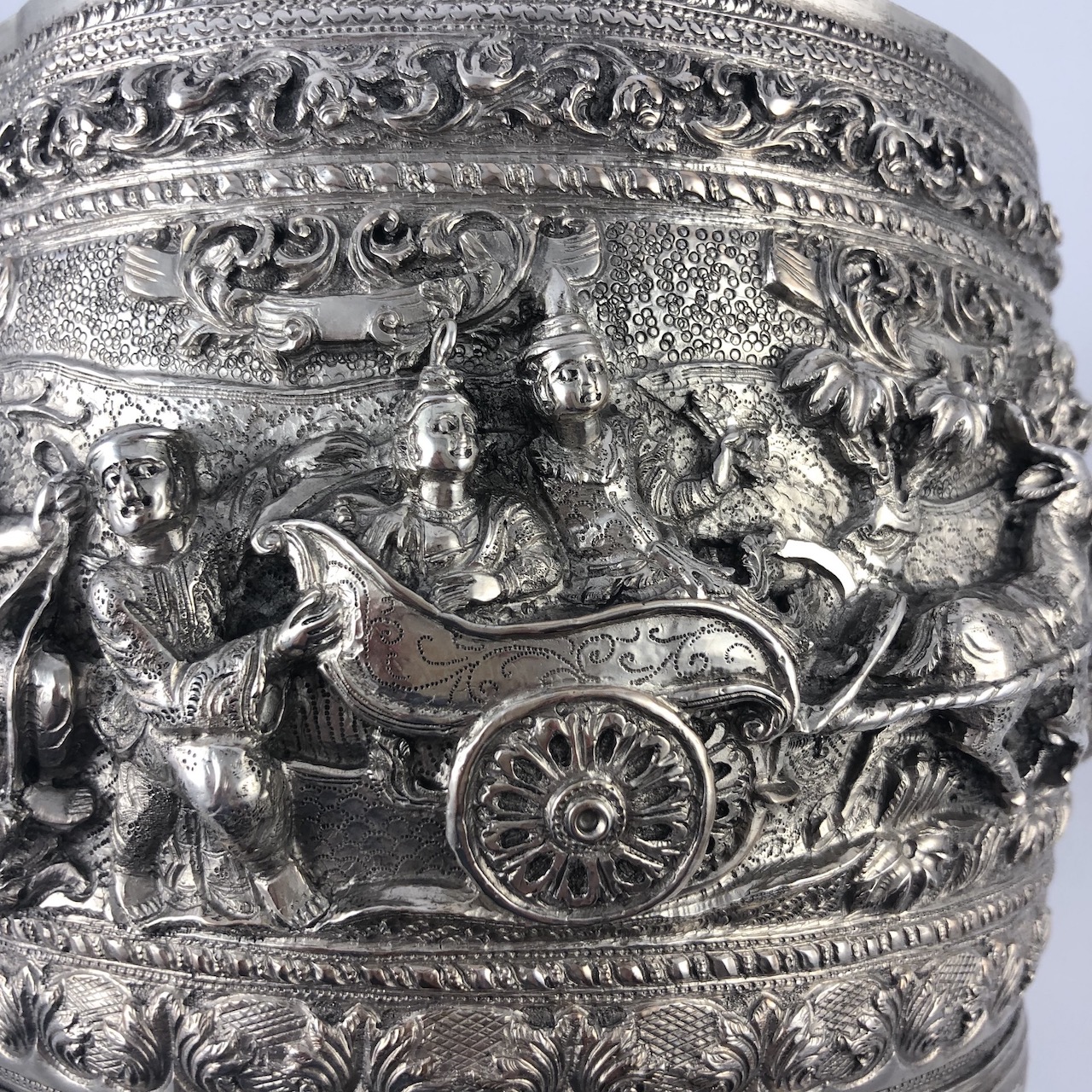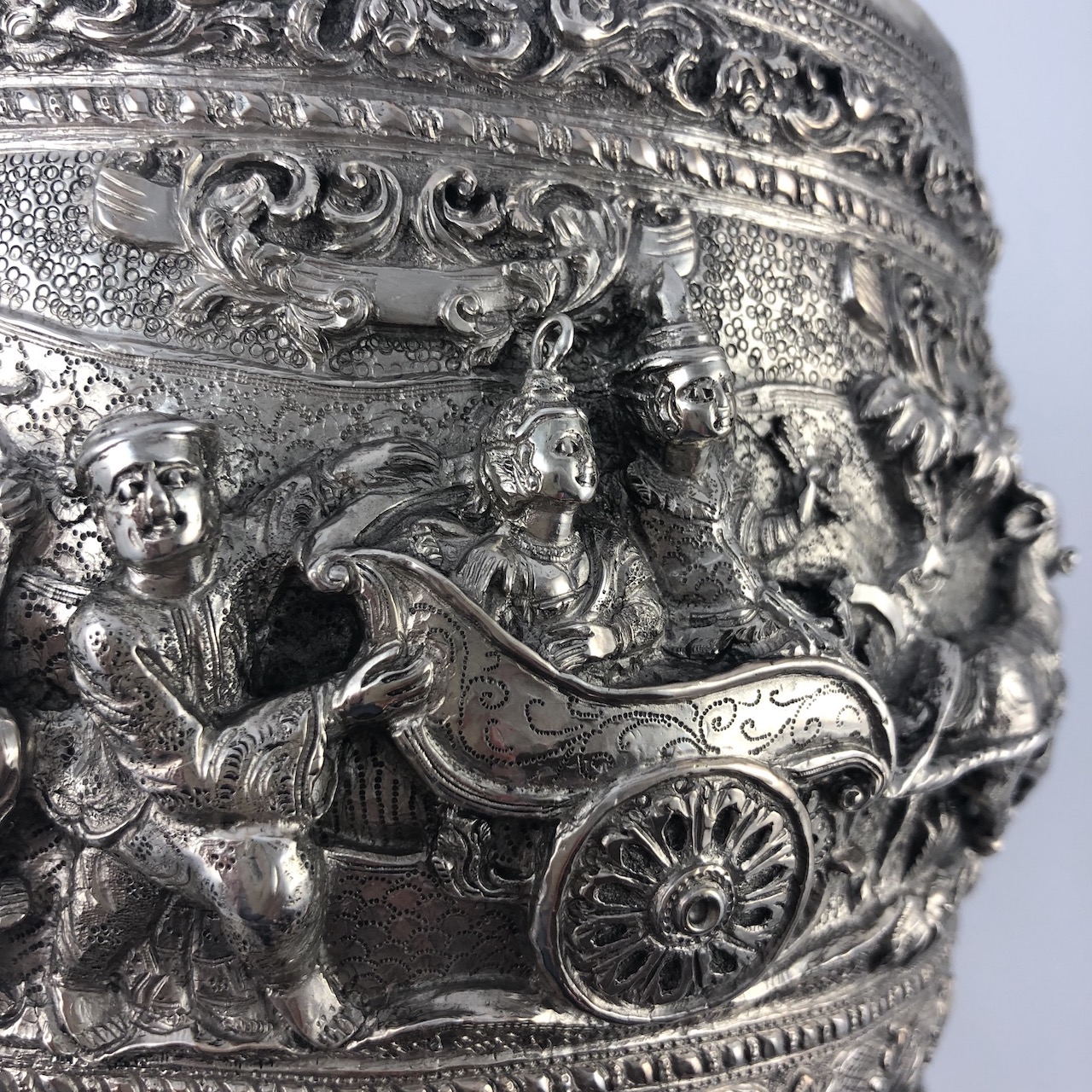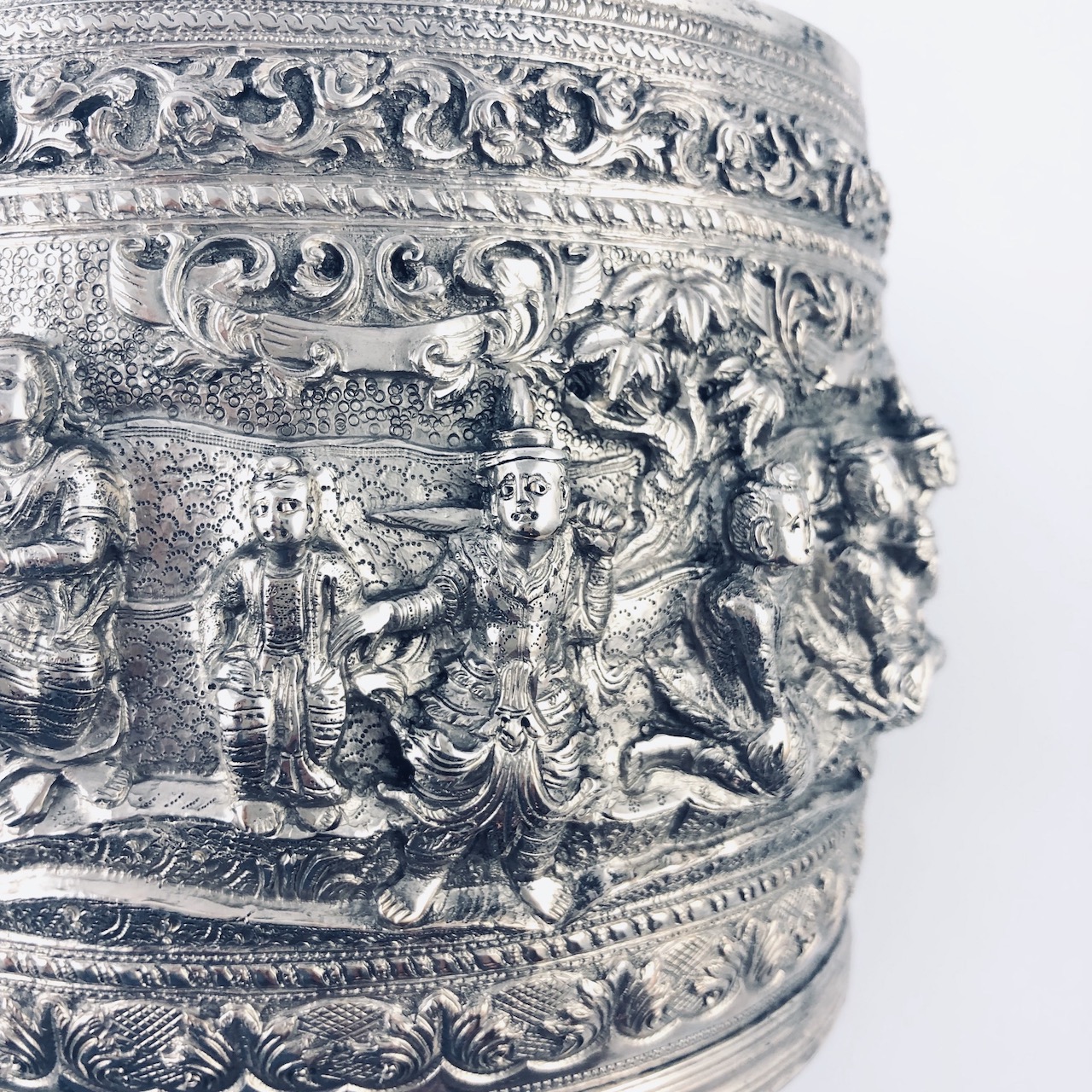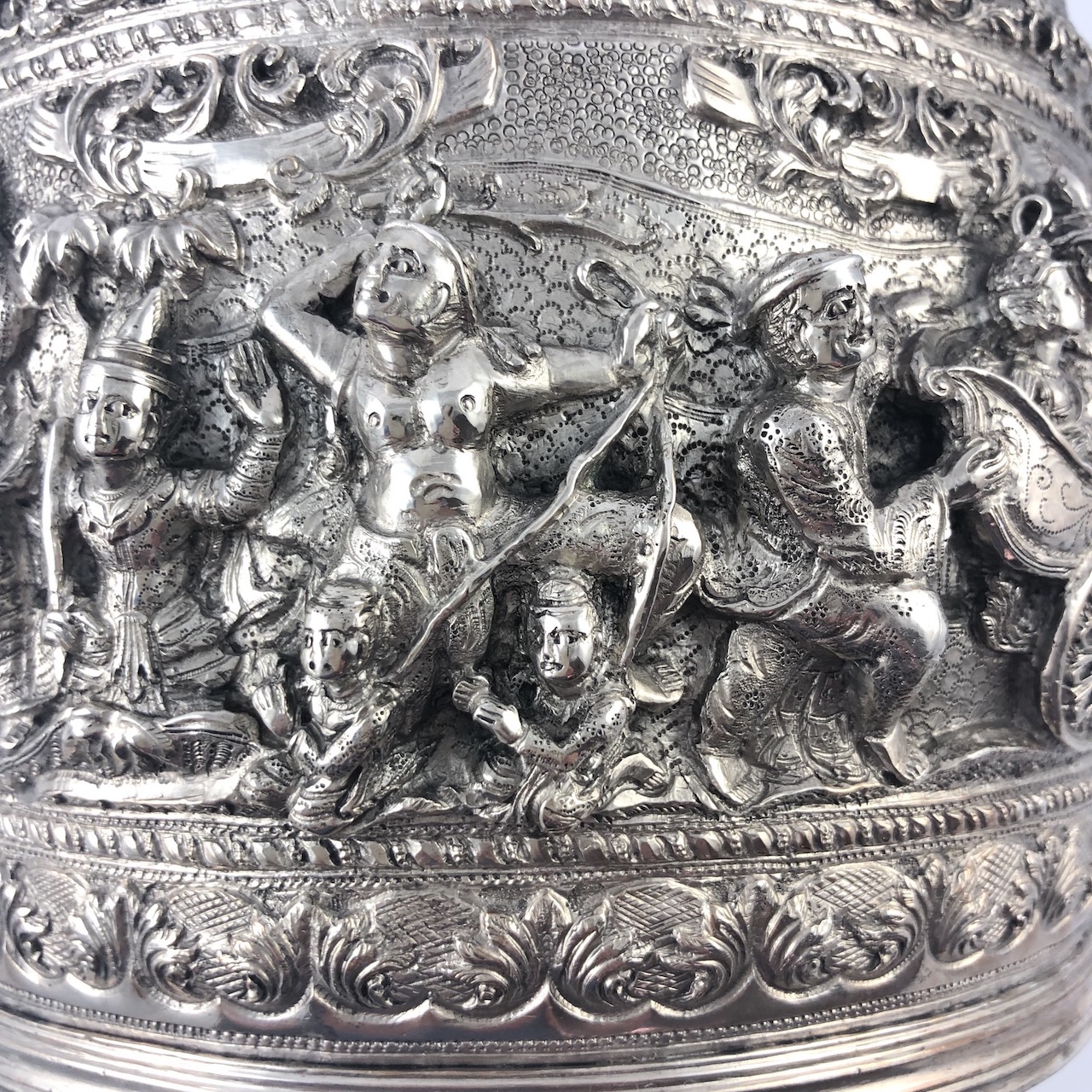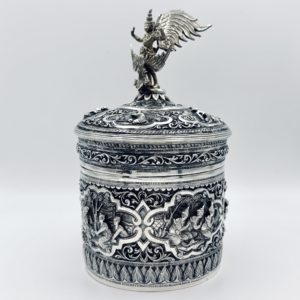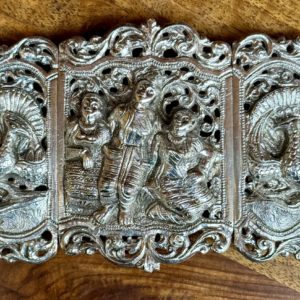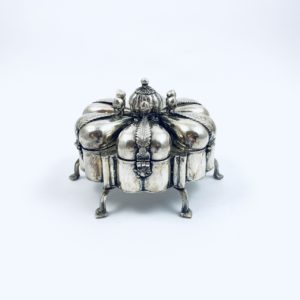Description
A large barrel-shaped silver box decorated with scenes in cellular mode from a Jataka (tales of the former lives of the Buddha from Buddhist literature). Above and below the main decorative panel are repeating wide and narrow bands of geometric and scrolling foliate designs; the foliate band within the upper group of bands forming the rim is in typical high relief and the lower foliate band comprises pairs of stylized lotus leaves. The central panel of repoussé figures in high relief shows people seated and standing, grouped in various scenes, one with lions and another with a carriage pulled by a deer (see detail), all set against typical chased scenery of layered hills and trees with stylized clouds above.
Fitting within the open top of the box is a plain circular tray, containing a segmented ring of six lidded boxes, each box and lid individually numbered with punched circles, surrounding a circular central box. Each lid is decorated with repoussé figures in high relief against scrolling foliate backgrounds, set within an ornate, cusped frame with more foliage at each corner. These vignettes, taken from the Ramayana, show scenes in the forest before the abduction of Sita by the Demon King of Lanka.
The box and its internal components are made of a good gauge of silver of high purity, probably 0.950 or better.
Maker’s mark:
A maker’s signature, in the form of a stylized peacock in full display, is chased at the centre of the base underside.
Dimensions & Weight:
Diameter (at rim): 17.2 cm / 6 ¾ ins; Diameter (at mid-point): 19.8 cm / 7 ¾ ins; Height (assembled): 16.5 cm / 6 ½ ins. Weight (assembled): 1555 gm / 50.0 ozT
Jatakas as Decorative Inspiration
Decoration on Burmese bowls, characterized by deep repoussé and finely chased details, most commonly consists of renderings of the Jatakas or stories of the previous lives of the Buddha. These show much more variation in the treatment of subject matter than do illustrations of the ‘Life of Buddha’, portrayals of which tend to be limited to votive objects for which the religion forbids the use of precious metals. Everyday bowls, betel boxes and trays, on the other hand, may be embellished with scenes from one or more of the ‘Last Ten Great Birth Tales of the Buddha’. Jataka stories often lend themselves to panoramic portrayals on the rectangular surfaces of trays and boxes, and portrayals of the Vessantara, the last and most beloved Jataka, may be featured in a variety of ways on different objects as, for example, on this betel box.
The Vessantara Jataka
The Vessantara Jataka symbolises the virtue of generosity and narrates the life of prince Vessantara who from early childhood on showed a great sense of charity. In summary, he gave away all his possessions, including an elephant that he grew up with, his horses, even his children and finally his beloved wife Maddi. However, as a result of his great merits, his sacrifices and acts of generosity were always rewarded and, in the end, the whole family and their animals got together again with a great celebration.
Considering this story in stages, early on, the people of his kingdom found Vessantara’s generosity distressing and frightening. They persuaded Vessantara’s father to take back the kingdom from his son and drive him into exile, where eventually his wife and children follow him. Scenes from this phase of his life can be seen on the main decorative panel of the box.
Before their departure, the family pay a visit to Vessantara’s mother, Phusati, who gives her blessings for their departure.
After their departure from the kingdom, Vessantara and his family decide to live in a forest as hermits. In one scene, when Vessantara gave away his horses that were pulling his carriage to a forest hermitage, a marvellous deer appeared immediately to replace the horses. [Detail]
Later, while Maddi collects fruits in the forest for her family [Detail], the Brahmin Jujaka meets Vessantara to ask for his two children to become servants for the Brahmin’s wife. Vessantara brokenheartedly gives his children away in an act of ultimate charity [Detail].
As Jujaka drives the wailing children through the forest, the gods imagine Maddi’s anguish if she were to see them in this state, and so they take the form of wild animals in order to block Maddi’s path, thus preventing her immediate return to the hermitage. [Detail]
A further panel shows the family, together again, celebrating.
The Ramayana
The Ramayana is an ancient Indian epic, composed some time in the 5th century BCE, about the exile and then return of Rama, prince of Ayodhya. The story of Rama, son of the King of Ayodhya, his half-brothers Bharat and Lakshman, Rama’s wife Sita and the abduction of Sita by Ravana, the Demon King from Lanka, following the distraction of Rama and Lakshman by the demon Marich, who had disguised himself as a golden deer so that the brothers would pursue him and leave Sita unprotected, can be found at: https://www.ancient.eu/The_Ramayana/

